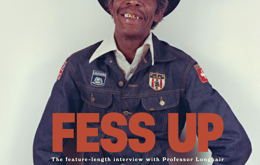He was one of those larger-than-life figures of the 1960s who seemed, even then, to belong to an earlier, bolder era. Among his admirers were Pablo Picasso and Brigitte Bardot. Salvador Dali reportedly said, “When Manitas plays, the firemen themselves catch fire.” That fire was extinguished on November 6 with the passing, at age 93, of flamenco guitarist Manitas de Plata (his name meant Little Hands of Silver).
If he seemed a romantic figure from a bygone era nearly half a century ago, I was stunned to learn that Manitas continued performing well into the 21st century. A New York Times obituary suggested that was from necessity: Manitas had “made and spent fortunes and generally lived a life of fulfilled appetites.” He reportedly spent freely on cars, casinos, and the women with whom he fathered nearly two dozen children. The obit quoted his agent saying: “He wanted to see people happy and to play the guitar.”
Thanks to an abundance of YouTube videos, Manitas plays on, nowhere more brilliantly than in a 1975 concert labeled Full Concert of Manitas de Plata, MUST SEE (Manitas appears ten minutes into the concert). Reportedly raised in a Gypsy caravan, Manitas embodied `flamenco fire,’ one of many musical genres created and nurtured by one of Europe’s poorest and most troubled minorities, the Roma.
Roma are believed to have migrated from northwestern India into Europe sometime between the sixth and tenth centuries. `Egyptian’ was what many Europeans called them, which over time became `gypsy.’ “To be a musician amongst the Roma is trade and calling,” writes Garth Cartwright, “an initiation begun in childhood, one carrying forth a community’s beliefs and concerns.” Cartwright’s lively book, Princes Among Men: Journeys with Gypsy Musicians (Profile Books Ltd., 2007) regales readers with adventures among Balkan brass bands in Eastern Europe. The author’s unsparing picaresque humor is mixed with sad dismay at the poverty and prejudice dogging the Roma everywhere in Europe.
Cartwright dedicated his entertaining and informative book to the Macedonian `gypsy queen’ Esma Redžepova, who, along with one of the book’s `bad boys,’ Saban Bajramović, can be heard in her youthful prime on Stand Up People: Gypsy Pop Songs from Tito’s Yugoslavia, 1964-1980 (Asphalt Tango Records, 2013). Stand Up is a vibrant sonic postcard from an era when Roma music was part of the musical mainstream before the tragic fragmentation of Yugoslavia made the Roma reviled outcasts.
Germany’s Asphalt Tango label has reissued several wonderful Romanian gypsy artists of this era, among them the great singer Gabi Luncă (christened`the silken gypsy woman’). If you’re not eager to search out hard-to-find German import CDs, you can sample these artists on YouTube, none more delightfully than a possibly-still-teenaged Esma dancing the Twist to her 1961 hit, “Romano Horo.”
 Baja Review A community newspaper serving Ensenada, Valle de Guadalupe, and Rosarito in Northern Baja California
Baja Review A community newspaper serving Ensenada, Valle de Guadalupe, and Rosarito in Northern Baja California





